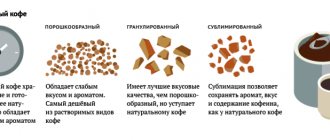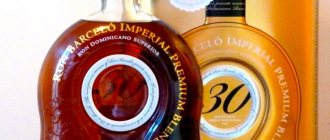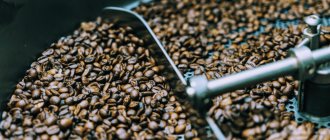Compared to other countries, Kenya acquired the status of a coffee power not so long ago, only at the end of the 19th century. Today, Kenyan coffee is confidently among the world's best samples. The varieties grown in this small African state are appreciated by both gourmets and ordinary lovers. What features of Kenyan coffee give it worldwide fame?
Kenyan coffee grows at high altitudes
Coffee trees in Kenya grow at altitudes between 1,400 and 2,000 meters.
Here the air temperature is lower, so the coffee berries ripen slowly and develop more flavor and aromatic qualities.
The main coffee growing area is on the slopes of Mount Kenya. The soils in these regions are volcanic, fertile, rich in minerals and nutrients.
Another reason why Kenyan coffee is so popular is that the country doesn't actually produce that much coffee. Kenya has only about 150,000 hectares of land suitable for coffee cultivation in the following regions: Ruiri, Thika, Kirinyaga, Mt. Kenya West, Nyeri, Kiambu, Muranga.
Did you know that people living in these regions hardly drink the coffee they produce? Kenya is predominantly a tea country, unlike neighboring Ethiopia.
Grain classification
In the capital of Kenya, Nairobi, the Coffee Department is located, which constantly monitors the quality of all Kenyan coffee. The department labels each coffee batch. Grading of beans takes place every week at the coffee auction. Since almost all coffee plantations are located on volcanic soil in the highlands, coffee grown in such areas is usually classified as Strictly High Grown.
The following grain labeling is accepted in Kenya:
- AA - the best coffee, large grain;
- AB - good coffee, medium grain;
- BA - medium quality coffee, small grain;
- BB - low quality coffee, small grain.
Varieties of Kenyan coffee clearly
Kenya AA
Kenya AA grows on the volcanic soil of Mount Kenya. Thanks to the temperate climate, fertile soil, and seasonal precipitation, the taste of this coffee is unusually balanced, rich and rich. The main large harvest is harvested from October to December, with additional harvests from June to early August. AA grains are large and oblong in shape. The drink is strong, rich, with bright berry sourness and fruity taste.
Kenya AB
Grains marked AB are more round in shape and smaller in size. Visually, they are similar in size to peas. Among the grains of this group there are practically no defective or damaged fruits. Therefore, this labeling group can be classified as elite varieties. The coffee turns out dense, with thick creams. The taste is dominated by citrus, with fruity sourness. This coffee is widely appreciated among gourmets and coffee aesthetes.
The remaining coffee beans are labeled as low quality, with large defects. Most grains are damaged and unripe. As a rule, they are not exported. However, some companies purchase such beans to produce instant coffee.
Cooperative production is a guarantor of quality
Most coffee in Kenya is grown by smallholder farmers
on small family plots and undergoes further processing and preparation for sale in cooperatives. Only a quarter of production is made up of large private farms with their own processing stations.
Typically, small farmers who own small plots of land hand over their harvested crops to the nearest processing stations. Before the processing process begins, the coffee cherries are carefully sorted. Only ripe red berries advance to the next stage. All work on farms and stations is done manually.
This approach guarantees stable product quality.
Coffee is sold at auction
In Kenya, coffee is sold through a national auction system. The coffee is put up for auction on behalf of the cooperative by marketing agents. The main buyers are large multinational companies, which then resell the lots to importers and roasters. Unfortunately, for a long time this was the only way to buy Kenyan coffee. This system was unstable, complex and completely opaque.
Recently, fortunately, positive changes have been taking place. Small importers, and sometimes roasters themselves, began buying coffee directly from auctions.
This not only helps support local, Kenyan businesses, but also makes the supply chain more stable and communication clear and efficient.
Auction system
The Kenyan coffee industry is known for its democratic auction system. In this system, samples of each lot are provided to bidders prior to the weekly auction. If a buyer (or buyer's buyer) is interested in a large quantity of coffee, he bids for that lot. In this transparent auction, the highest bidder wins and no insider trading occurs. The result of this system is that, as a rule, the best batches of coffee sell for a higher price.
Famous Kenyan varieties
Traditionally, five different varieties of Arabica are grown in Kenya:
SL28 is one of the most famous and respected African Arabica varieties. From Kenya it spread further across the continent and into Latin America.
The SL28 variety has an interesting and long history. In 1931, researchers at Scott Agricultural Laboratories selected 42 coffee trees from different regions of Kenya and neighboring Tanganyika (present-day Tanzania) to study their yield and resistance to disease and drought. All trees were named with the prefix SL in honor of Scott Laboratories. The selection of the SL28 variety, descended from the Tanganyika Drought Resistant variety (Tanganyika Drought Resistant, the seeds of which were imported from Tanzania), gave very good results, after which the seeds began to be actively distributed among producers.
Some sources claim that Scott Laboratories crossed the French Mission, Mocha and Yemen Typica mutations to produce SL28. Whatever the exact genetic composition of this variety, their original goal was most likely to create a plant with good yield and resistance to drought and disease. Recent genetic tests have confirmed that SL28 belongs to the Bourbon genetic group.
Another distinctive feature of SL28 is the minimum required care for the plant. The tree can be left unattended for several years and then returned to successful production. In Kenya you can often find SL28 trees that are 60-80 years old and still bearing fruit.
The SL34 was also developed by Scott Laboratories in the early 1930s. The variety is of original Kenyan origin, all seeds of this accession were selected from one tree of the private farm Loresho Estate in Kebete, Kenya. Research records note that SL34 is derived from the French Mission variety.
French missionaries founded a mission in Bura (Taita Hills, Kenya) in 1893 and planted the first Bourbon coffee seeds, which they brought from Reunion Island. From there, the seedlings spread throughout the country.
Thanks to the active work of French missionaries and the fact that with their help coffee seeds were transferred from Reunion Island to content, the Bourbon variety received a second stable name - French Mission.
K7
was released in Kenya in 1936 after five generations of breeding SL28 and SL34. It is also characterized by low but stable productivity, high taste and aroma qualities, and, in addition, is resistant to some diseases of coffee leaves, for example, coffee “rust”. Belongs to the Bourbon genetic group.
Ruiru 11
– a high-yielding variety, resistant to disease, bred from several varieties: crossing Katimor with a hybrid of K7, SL28, N39 and Rume Sudan.
The variety owes its existence to the coffee berry disease epidemic in 1968, which led to the loss of 50% of the crop in Kenya. In the 1970s, the coffee research station in Ruiru, which gave the variety its name, began an intensive breeding program for varieties resistant to the disease. This led to the creation of Ruiru 11, released in 1985.
Batian
– an artificially bred mutation of the Ruiru 11 variety. A complex, multi-component variety. Inherits the genes of varieties SL28, SL34, Rume Sudan, N39, K7, SL4 and Timor Hybrid. Resistant to coffee rust and other diseases, developed at the Coffee Research Institute (CRI) in Ruiru in 2010.
Coffee consumption per capita in different countries of the world
Per capita coffee consumption in Africa is low. On this continent, the leading coffee consumers are Ethiopia (2.27 kg), Madagascar (1 kg) and Côte d'Ivoire (0.9 kg). However, their performance is still significantly lower than other emerging markets such as Brazil (6 kg) and Algeria (3.2 kg). This is data from Ecobank. And in EU countries they consume about 9 kg per person.
But this is changing over time, with the region's emerging, urban middle class increasing coffee consumption locally.
This is evidenced by the growing presence of a chain of local coffee shops: Art Cafe in Kenya (partly owned by local coffee roaster Dorman's) and Java House, cafes in Nigeria (Café Neo) and Ethiopia (Café Kaldi).
Countries including Burundi, Kenya, Rwanda, Malawi, Tanzania, Zambia and most recently the Democratic Republic of Congo have already established export markets.
Each country's coffee has its own distinctive characteristics, making it accessible to all tastes.
Interestingly, with the exception of Ethiopia, very few Africans actually drink coffee. In many African countries, especially Kenya and Uganda, tea drinking is prevalent.
Let's take a deep dive into one of these African coffee-producing countries to learn a little about their coffee growing history and what it has to offer.
coffee cherries
High quality coffee is washed and processed
Washed coffee is the most popular coffee in Kenya. High quality washed coffee is traditionally double fermented.
After consumption, the berries are passed through a depulpator - the pulp from the coffee berries is removed mechanically. The grains, still coated in a thin, sticky layer of gluten, are then placed in fermentation tanks with a minimal amount of water for 12 to 24 hours, depending on the rate of fermentation.
When most of the gluten has separated, the grain is washed with water. Immature grains with low density float to the surface of the water and are removed. The process is then repeated: the coffee is left to ferment for several hours and washed again with clean water. During the fermentation process, gluten is destroyed and a large amount of sugars breaks down.
This process forms the basis of the flavor of washed coffee: highlighting acidity, citrus and floral notes, creating a clean and balanced profile.
The next day, coffee beans in parchment (a thin parchment layer around the green bean, what remains after removing the berry pulp and gluten) are washed in special channels.
After washing, the parchment is laid out on tables to dry in direct sunlight, covered during the hottest hours of the day and at night. Drying takes from 8 to 14 days.
Coffee recipe
Lovers of the coffee drink to improve digestion, appetite, and for colds offer coffee made from beans from Kenya, which includes red pepper. To do this, you need to prepare 2 teaspoons of any Kenyan beans, 100 grams of water, half a teaspoon of butter, a pinch of salt and red pepper, and the amount of sugar to taste.
Ground coffee beans should be poured into a Turk and fried over low heat. Then add water, sugar and bring to a boil. After this, add spices, oil, mix thoroughly and bring to a boil again. The prepared drink should be drunk in small sips from a preheated cup.
Kenyan coffee is classified by grade
As mentioned above, at each stage of processing, coffee beans are sorted and sorted. All coffee that is exported is classified by size (grade).
It is important to say that this classification is a physical characteristic of grain that is not related to quality and taste parameters.
Kenya E
is “elephant grain”, gigantic in size.
Such batches are usually small and quite rare. Kenya AA
is the most common marking for large sizes.
The grain with the largest screen size (surface length) is from 6.8 mm. Kenya AB
is a mixture of two types of grain: category A grain with a surface length of 6.8 mm and B grain - a slightly smaller size, from 6.2 mm.
Kenya RV
- peaberry grains.
Two grains usually ripen in the berry, but sometimes only one grain develops inside the berry; it takes on a round shape and is called peaberry. Kenya C
– grains are smaller in size than category AB.
It is rare to find such a label among high-quality coffee. Kenya TT
is another small size.
This category usually includes grains that do not fit in size in categories AA, AB and E. If sorting by density is carried out, then the lightest grains fall under the TT label. Kenya T
- the smallest grains, pieces and fragments.
MN/ML
– Mbuni Heavy and Mbuni Light. Unripe or overripe berries that do not pass the control sorting before delivery to the processing station are sent to dry on a tarpaulin, and over time they turn into low-quality naturally processed coffee called Mbuni. This coffee is sold at a very low price and accounts for about 7% of annual production.
If you are looking for high quality coffee with an interesting flavor profile, intense acidity of ripe berries, citruses and young wine, a round and soft body and a long pleasant aftertaste, coffee from Kenya is what you need!











